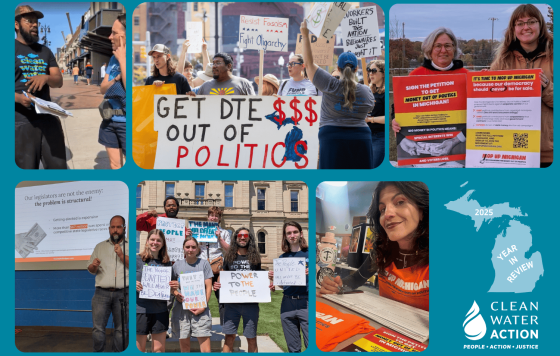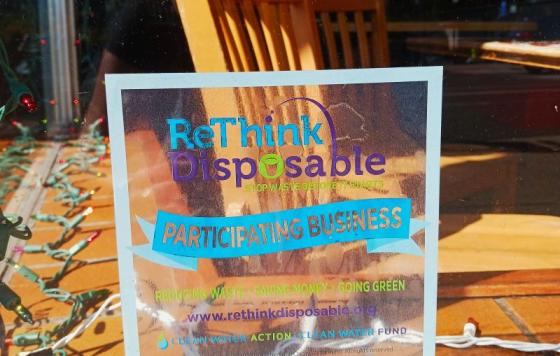by Jonathan A. Scott, editor, Clean Water Currents (on Twitter @jscottnh)
Since 2002, Clean Water Action has doggedly fought an uphill battle to restore Clean Water Act protections for some of America’s most important water resources. On March 25, 2014, the Obama Administration announced it was finally taking action to fix the problem.
When was the last time you thought about your water? We’ve made so much progress since the early 1970s when Clean Water Action first got started, it’s easy to see how almost anyone in the U.S. might make the mistake of taking clean water for granted.
Don’t do it!
“An awakened local citizenry will always be needed to support the tough stands officials will have to take to get the water clean.” Clean Water Action’s founder, David Zwick, wrote these words back in 1972, but they’re just as true today.
Nevertheless, it can happen to the best of us. Back in the fall of 2002, when a senior member of our DC-based staff first started reporting rumors that the Bush Administration was going to propose some behind-the-scenes regulatory changes that could gut the Clean Water Act, many on our team were skeptical – at first.
After all, what politician would want to mess with one of the most successful environmental laws ever, the Clean Water Act, and right around the time of the law’s 30
th anniversary, no less. In addition to betraying the public trust – who out there does not care about clean water? – such a move would surely be political suicide.
Soon enough, however, the rumors became ugly reality, as President Bush’s Environmental Protection Agency quietly introduced its proposal to strip Clean Water Act protections from wetlands, lakes, ponds, streams and watersheds around the country.
Why is this such a big deal? It’s simple, really. You can’t protect all of the waters of the United States, as the Clean Water Act was enacted by Congress to do, if you leave some of the most important water resources unprotected.
If the water you care about – say your drinking water source – is “protected” but everything upstream is left vulnerable to pollution and development, then your water may not really be protected at all.
Weakening the Clean Water Act in this manner creates a horrible precedent. If this is allowed to happen to a law with near-universal appeal that has delivered huge environmental and economic benefits felt by most Americans, what about other environmental and health protections? Which laws would be next on the chopping block?
Clean Water Action and allies mobilized rapidly to sound the alarm. In a few short months more than 30,000 Clean Water Action members and tens of thousands more from other environmental, conservation and sporting organizations had weighed in. The overwhelming message delivered to EPA and the White House: keep the Clean Water Act strong and effective.
By the end of 2003, more than 200,000 citizens had called and written letters. 26 U.S. Senators and 218 Representatives on both sides if the aisle joined together to oppose the rollback. Many of them signed to sponsor a bill that would permanently block the weakening changes, the Clean Water Restoration Act. In late December 2003, four days after a White House meeting with angry sportsmen, the Administration withdrew its proposal.
That was a major win for Clean Water Action and allies. But the battle turned out to be far from over. A polluter-friendly Supreme Court ruling in 2001 and another in 2006 gave cover for the back-door continuation of the policy the Bush White House had publicly backed away from. In withdrawing its formal proposal to weaken Clean Water Act protections, the Administration left in place its less-formal “guidance” leaving the same high-stakes water resources – thousands of miles of creeks, streams, natural ponds, and millions of acres of wetlands – exposed to destructive development and pollution.
As a result, drinking water sources serving more than 117 million Americans remain at risk. Clean Water Action has campaigned relentlessly, steadily building momentum for fixing this problem ever since.
Changes in Congress dimmed the prospects for winning passage of the Clean Water Restoration Act or successor bills to restore the Clean Water Act’s historic protections for smaller streams, ponds and wetlands. If such a vote were to be held today, in a U.S. House of Representatives whose leadership has
some of the worst anti-environment voting scores ever compiled by the nonpartisan League of Conservation Voters, the outcome would not be a good one. This same body has voted repeatedly to undermine a whole host of water and health protections. Only veto threats from President Obama and a more reasonable U.S. Senate have held them at bay.
Over the past 12 years, hundreds of thousands of
Clean Water Action members and others have told EPA and the White House they support – and demand – action to protect our water and our health.
Now the Obama Administration has taken a strong stance, determined to lead on protecting water and health even if polluters and their allies in Congress might prefer to see the Clean Water Act remain in its current, weakened state. Since the damage started with actions taken under a previous Administration, the
common-sense corrective actions now proposed by President Obama’s EPA and U.S. Army Corps of Engineers can settle the matter definitively.
The referenced media source is missing and needs to be re-embedded.
The referenced media source is missing and needs to be re-embedded.
There’s still time to make a difference for clean water and restore the nation’s historic commitment to clean water for fishing, swimming and drinking.
How the story turns out is up to us – Clean Water Action members and allies can make the winning difference. We have a few short months to demonstrate the overwhelming support that exists for protecting clean water.
We’re in this for the long haul, but the time for action is now. Want to make a difference? Here’s how:
Donate Now – We’re up against some of the most powerful and well-heeled polluters on the planet.
Take Action Now – Make your voice heard so there’s no mistaking where the public stands on this critical clean water issue.



